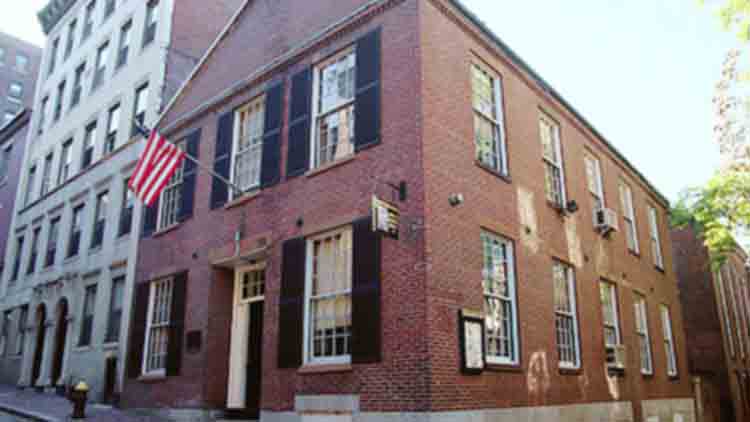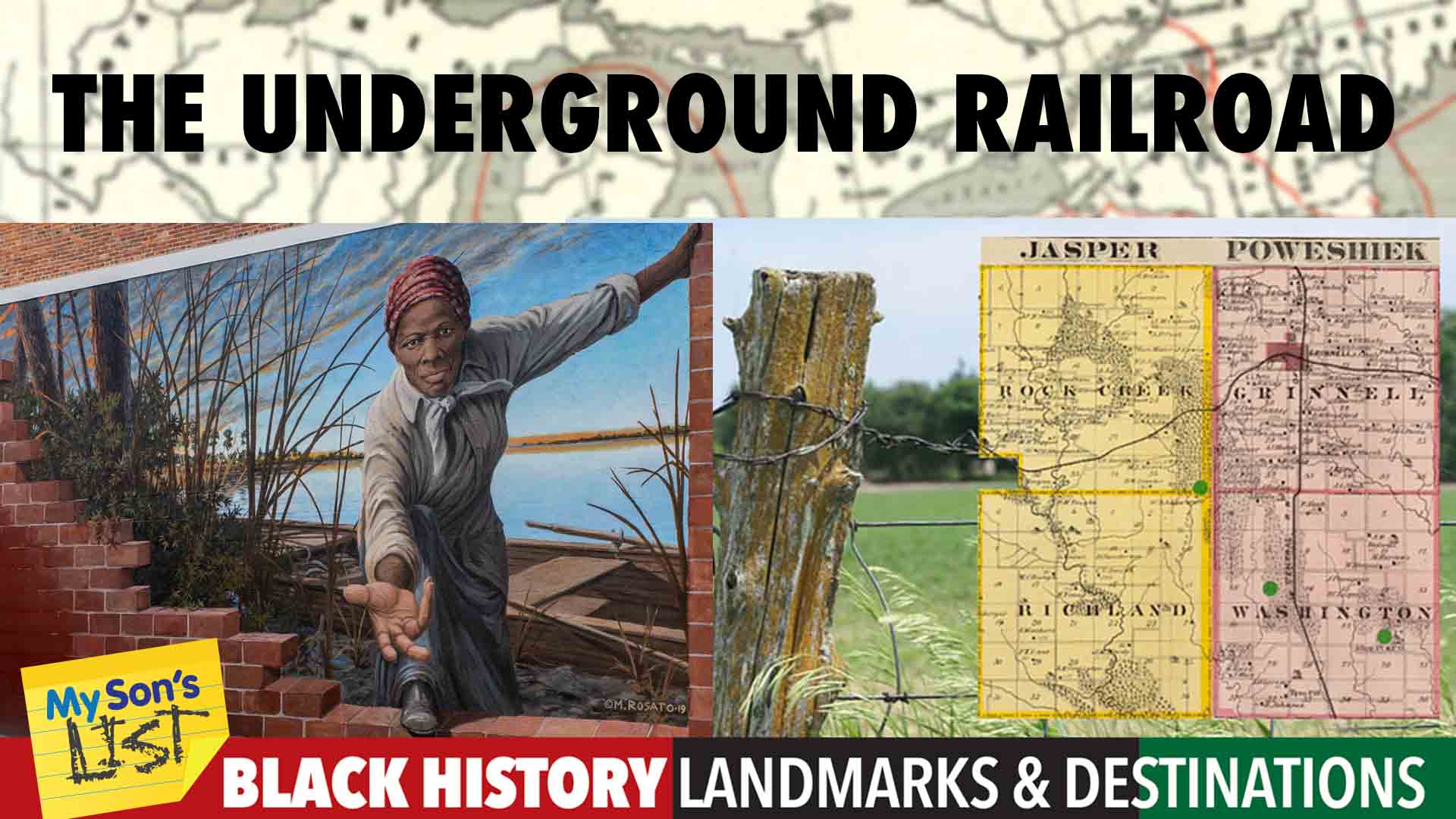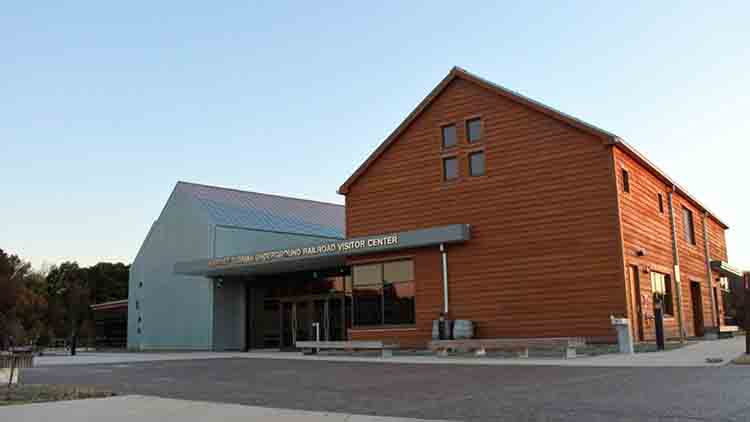Part of our African-American Landmarks & Destinations Family Travel Series
By Kimberly Dijkstra
Networks of secret routes and safe houses established in the early 19th century allowed an estimated 100,000 enslaved people to escape to freedom. Slaves fled bondage over remote and rugged terrain on foot, in wagons, by boat, and by train. Many were unaided, while others were assisted by abolitionists. This system was known as the Underground Railroad.
The National Underground Railroad Network to Freedom Act of 1998 has preserved 682 sites associated with the Underground Railroad, including museums, historic homes, parks, monuments, trails, and more.
Here are some notable locations on the Underground Railroad to visit with the family and connect with remarkable figures from this time in history.
Frederick Douglass Driving Tour
Talbot County, Maryland
Famed abolitionist, writer, and orator Frederick Douglass was born into slavery in Maryland. Following his escape, he led a life dedicated to helping others through his books, campaigning for the rights of freed slaves, active support for women’s suffrage, and holding public office.
The Frederick Douglass driving tour starts on the eastern shore and takes you through Annapolis, Baltimore, and near Washington DC. Some highlights include:
- Three handmade quilts are on display at the Bay Country Welcome Center. Made by Joan Gaither, they depict Douglass’s experiences in Talbot County.
- A statue dedicated to Douglass and his “Self-Made Men” speech is on display on the lawn of the Easton County Courthouse.
- The St. Michael’s Museum at St. Mary’s Square features an exhibit on Douglass and a half-mile walking tour.
- The oldest American state house in continuous use, the Maryland State House has statues of Harriet Tubman and Frederick Douglass on display inside the room where the 1864 Constitutional Convention was held.
- The Banneker-Douglass Museum and Reginald F. Lewis Museum are both dedicated to preserving Maryland’s African-American heritage and culture.
Harriet Tubman Byway
Maryland, Delaware & Pennsylvania
Following her escape from slavery, Harriet Tubman risked her life time and time again to help 70 others escape. This self-guided driving tour takes you to places where Tubman was born, lived, labored, and fled to. The tour winds for 125 miles through Maryland’s eastern shore, continues for 98 miles through Delaware, and concludes in Philadelphia, where Tubman first found her freedom.
Don’t miss the Harriet Tubman Underground Railroad Visitor Center in Church Creek, MD, where you’ll find informative multimedia exhibits, films, and helpful staff to answer your questions. It is the perfect place to stop for a picnic and explore the nature trail before continuing on to the 40+ designated sites on the byway.
Download the audio guide before you depart for the full experience of Tubman’s powerful stories.
Iowa’s Freedom Trail
Fremont County to Davenport, Iowa
Prominent abolitionist John Brown believed in aggressive action against slaveholders. He gained national attention when he led anti-slavery forces in the Bleeding Kansas conflict. Brown made several trips across Iowa in the effort to bring enslaved people to freedom. The Iowa Freedom Trail follows the path of his last trip across Iowa, starting at the Missouri River.
In 1859, Brown and a group of escaped slaves took refuge in the home of Dr. Ira Blanchard in Civil Bend. The adjacent Blanchard Cemetery is the first stop on this Underground Railroad trail.
The group continued to travel eastward, through snowstorms and dangerous territory, seeking refuge with other abolitionists. A month after they set out, the group passed through Davenport and crossed the Mississippi River. Their stops are denoted by historic markers all across the state.
African American Heritage Tour
Lancaster, Pennsylvania
Lancaster’s many Underground Railroad sites are connected on the African-American Heritage Walking Tours. Guests will gain insight into the roots of civil rights activism and pioneers of Black business as they walk through the center of one of the largest National Historic Districts in the country.
Guided by knowledgeable volunteers, the tour visits 12 historic sites and guests learn seldom heard stories of local heritage and struggles for freedom. The first stop is the site of the Philadelphia & Columbia Railroad Station, where freedom seekers traveled in secret train compartments to Philadelphia.
The former site of George Hughes’ slave-catching business is also on the tour. His assistant secretly recorded his plans and passed them along to abolitionist Thaddeus Stevens, who used the information to coordinate with other individuals active in the Underground Railroad.
To take a self-guided walking tour, download a copy of the Map and Guide.
Black Heritage Trail
Boston, Massachusetts
With its strong abolitionist community, Boston was considered a desirable destination for those who had escaped slavery. Before, during, and after the American Civil War, Black communities thrived in Boston’s Beacon Hill. The Black Heritage Trail is a 1.6-mile walk through this neighborhood, showcasing community members who championed the movement to abolish slavery and provided safe haven for freedom seekers.

The Museum of African American History (MAAH) is the first stop on the trail. The museum runs the African Meeting House, which has been restored to its 1885 appearance, and the Abiel Smith School, the nation’s oldest school for African American children. Exhibits tell the stories of abolition and equal education at a time when educating black children was controversial.
In 1850, Lewis and Harriet Hayden turned their home at 66 Phillips Street into an Underground Railroad station, sheltering countless fugitives. The couple prevented slave catchers from reclaiming their visitors by threatening to blow up the house with gunpowder. They even welcomed Harriet Beecher Stowe as a guest while she did research for her book, Uncle Tom’s Cabin.
Guided walking tours led by NPS rangers are scheduled seasonally, while self-guided tours can be carried out year round. Maps are available at MAAH, 46 Joy St., and at the Faneuil Hall Visitor Center.
Visit the National Park Service website for more Underground Railroad experiences.
More Landmarks and Destinations
Selma to Montgomery Historic Trail
Martin Luther King Jr. Memorial
Maggie L. Walker National Historic Site
Booker T. Washington National Monument
The DuSable Museum of African American History
Sojourner Truth - Monuments To A Monumental Woman






